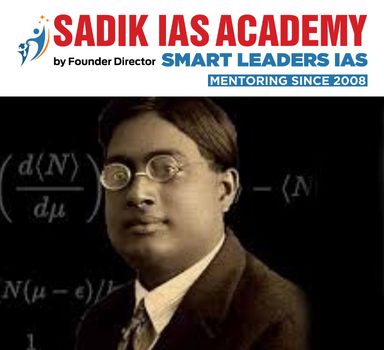Trending Now

Satyendra Nath Bose:
·
Early
life: Born on January
1, 1894, He grew up and studied in Kolkata, where he solidified his position as
an exemplary academician.
·
Educational
Career:
o
By the age of 15,
he began pursuing a Bachelor of Science degree at the Presidency College and
later finished his MSc in Mixed Mathematics in 1915.
o
At 22, Bose was
appointed lecturer at Calcutta University, along with astrophysicist Meghnad
Saha.
§ By the end of 1917, Bose began giving
lectures on physics.
§ In 1921, he joined the then-newly created
Dacca University as Reader in Physics.
§ It was here while teaching that he documented
his findings in a report called Planck’s Law and the Hypothesis of
Light Quanta.
·
Even though his
research was rejected by a journal, he decided to mail his paper to Albert
Einstein.
·
Einstein
recognised the significance of Bose’s theory and generalised it to a wider
range of phenomena, and the theory came to be known as Bose-Einstein statistics.
·
The Breakthrough:
Indian mathematician and physicist noted
for his collaboration with Albert Einstein in developing a theory regarding the
gaslike qualities of electromagnetic radiation.
·
Return to
India: After his stay in
Europe, Bose came back to India and was appointed professor of physics and then
Head of Department at Dhaka University in 1927.
·
Awards to
honour him
o
His contributions
to physics were recognised by the Indian government by awarding him the Padma
Vibhushan, one of the highest civilian awards in the country.
o
He was also
appointed as National Professor, the highest honour in India
for scholars.
o
In honour of
Bose’s legacy, any particle that obeys the Bose-Einstein statistics is called a boson.
§ His theory is a cornerstone of condensed
matter physics.
o
He lived the
remainder of his life in Kolkata, until his death in 1974.